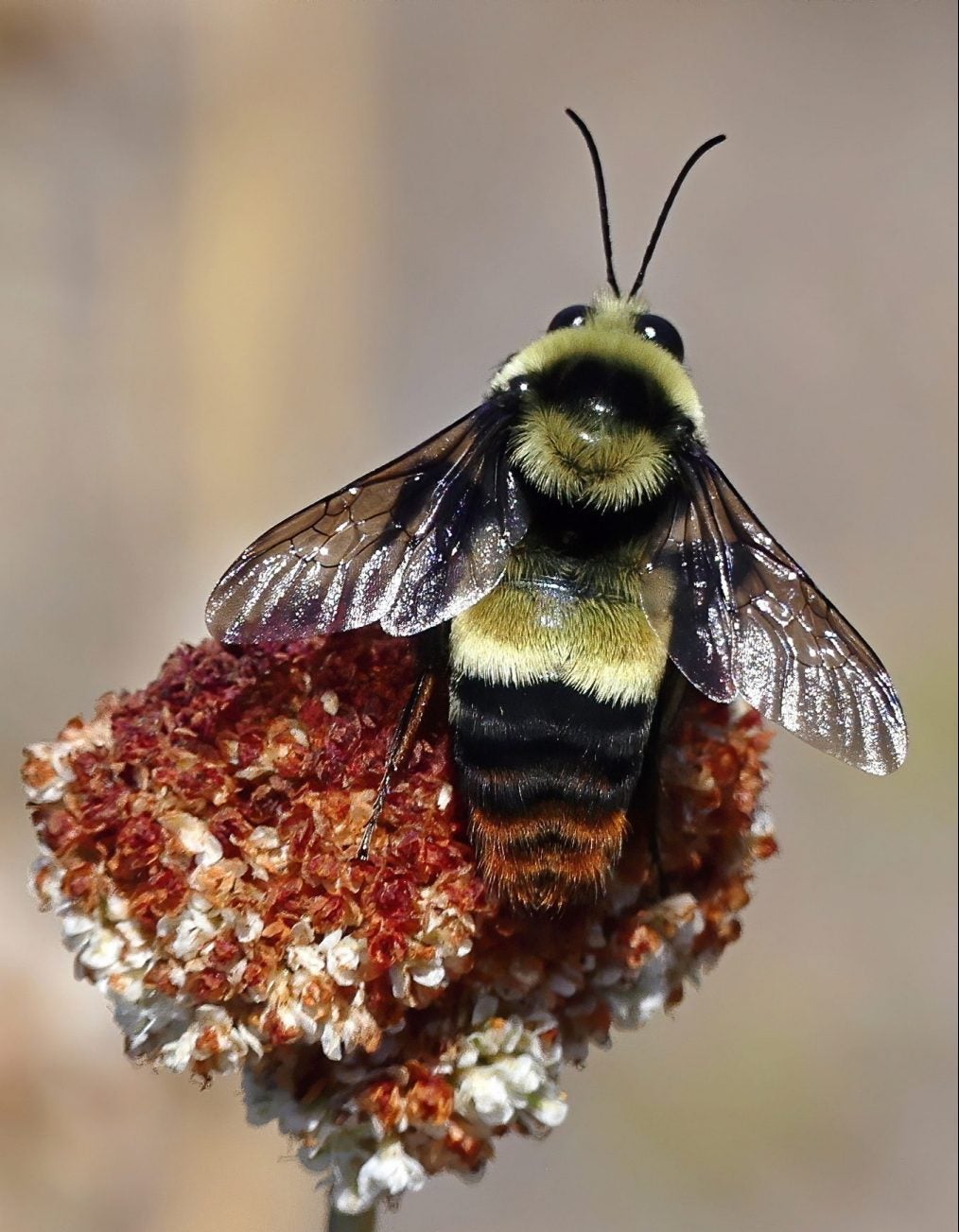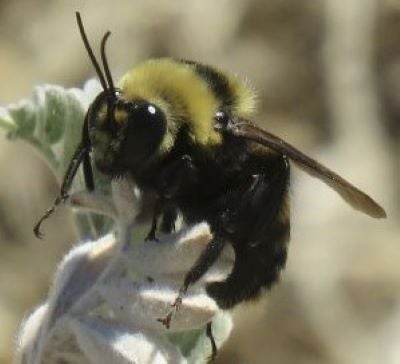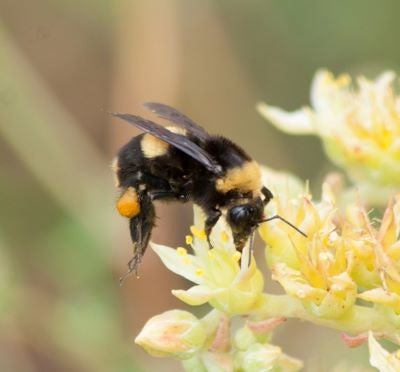
General Information: Many plants, including agricultural crops, require bees to produce seeds and fruit. The Crotch bumble bee has a squarer head than typical honeybees. Once found throughout the Central Valley, it is rarely seen, even in its historical range.
Category: Focal species
Surface Water Needs: None
Federal Listing Status: None
State Listing Status: Candidate Endangered
Potential Conservation Actions:
- Create grazing plans
- Avoid plowing and pesticide applications
- Plant natives
- Apply prescribed fire when/where appropriate
Fun Fact
The Crotch bumble bee is named after the entomologist George Robert Crotch.
Habitat
The Crotch bumble bee requires hot and dry environments like grasslands and desert scrub. It likely overwinters in soft, disturbed soil, or under leaf litter. It can nest underground in abandoned rodent dens.

Grasslands

Deserts

Low-density shrublands

Agricultural canals and ditches
Disturbance and Stressors
Urban development, loss of habitat and fragmentation, pesticide application, disease, competition, and climate change have all contributed to the decline of the Crotch bumble bee.

Industrial development and pollution

Urban development

Habitat fragmentation

Pesticides and contaminants


Sources: Goulson 2010, Hatfield et al. 2015, Hatfield et al. 2018, Rusterholz and Baur 2010
Photo credits: Liam O’Brian, iNaturalist